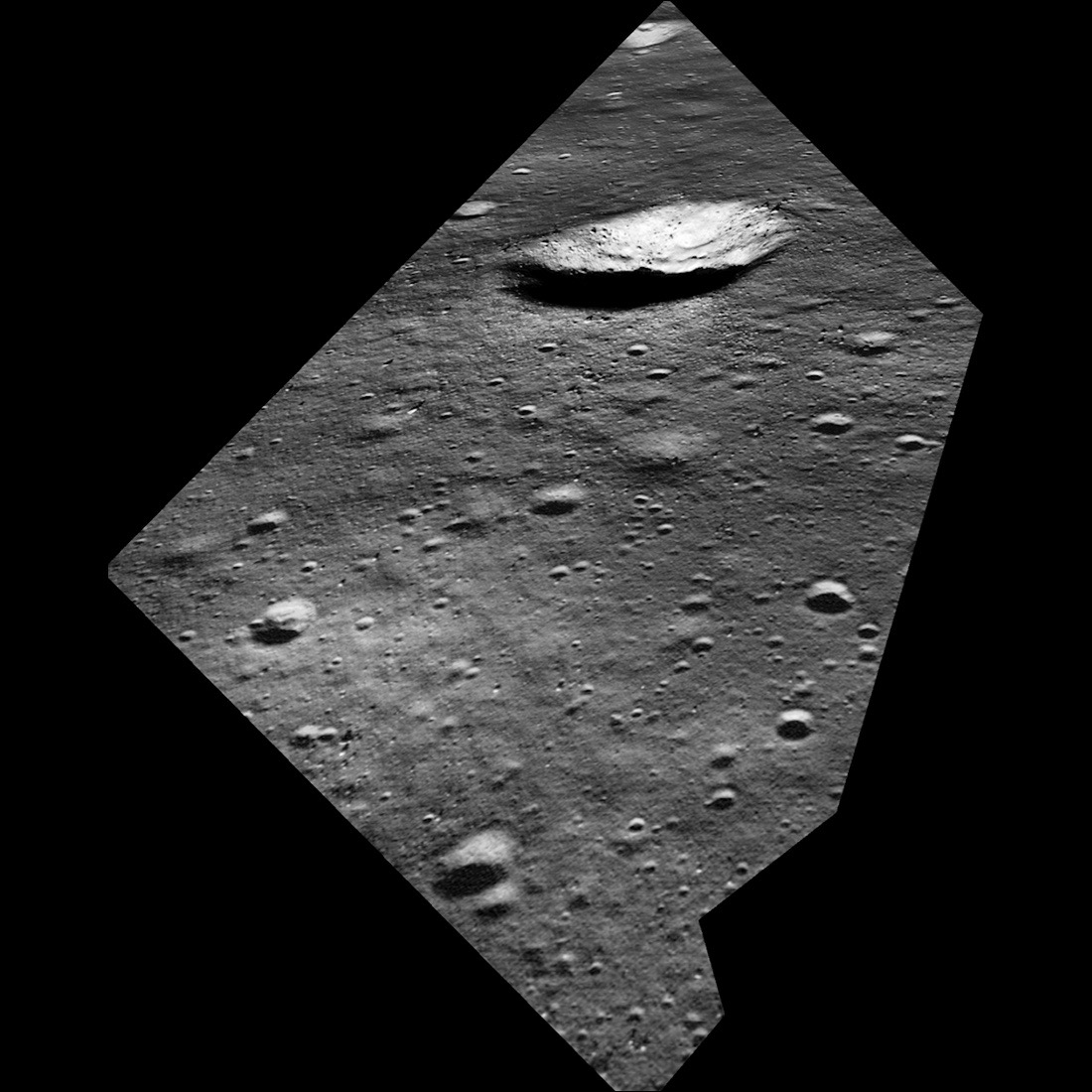
Here's What Neil Armstrong Saw As He Landed Apollo 11's Eagle on the Moon
We hadn't had the legendary moonwalker's perspective before.
Now you can see what Neil Armstrong saw as he landed the Apollo 11 lunar module, known as the Eagle, on the surface of the moon on July 20, 1969.
The new view comes courtesy of NASA's Lunar Reconnaissance Orbiter (LRO), which has been circling Earth's nearest neighbor since 2009.
"Most people are familiar with the 16mm movie of the Apollo 11 landing," said Mark Robinson of Arizona State University, leader of LRO's Lunar Reconnaissance Orbiter Camera (LROC).
"However, that viewpoint was looking out the right window, entirely missing the hazards that Armstrong saw as the Eagle approached the surface," Robinson added. "The LROC team simulated what Armstrong saw out his window."
More coverage:
- Relive the Apollo 11 Moon Landing Mission in Real Time
- Apollo 11 Moon Landing Giveaway with Simulation Curriculum & Celestron!
- Apollo 11 at 50: A Complete Guide to the Historic Moon Landing
Visual record

"The only visual record of the historic Apollo 11 landing is from a 16mm time-lapse (6 frames per second) movie camera mounted in Buzz Aldrin’s window (right side of Lunar Module Eagle or LM)," LROC team members wrote in a description of the new video on Tuesday (July 16). "Due to the small size of the LM windows and the angle at which the movie camera was mounted, what mission commander Neil Armstrong saw as he flew and landed the LM was not recorded."
The LROC team reconstructed the final three minutes of the Eagle's landing trajectory.
Get the Space.com Newsletter
Breaking space news, the latest updates on rocket launches, skywatching events and more!
"From this trajectory information, and high-resolution LROC NAC [Narrow Angle Camera] images and topography, we simulated what Armstrong saw in those final minutes as he guided the LM down to the surface of the moon," the team members wrote.
The video begins when Armstrong could see that his automated aim point was on the rocky northeastern flank of the 620-foot-wide (190 meters) West Crater. That was not a great landing spot, so the astronaut took manual control and flew horizontally, searching for a safer place to touch down.
"At the time, only Armstrong saw the hazard; he was too busy flying the LM to discuss the situation with mission control," LROC team members wrote.
To make the new video, the LROC team used a time-synchronized version of the original 16mm film and the First Men on the Moon website, which synchronizes the air-to-ground voice transmission with the original 16mm film.
You can see the new video at the LROC site.
"Be sure and check out the three alternate versions of the video posted at the bottom of the Featured Image," Robinson said, "especially the two-astronaut version: 'What Armstrong and Aldrin Saw: Simulation vs. Original Film.'"
- The Apollo Moon Landings: How They Worked (Infographic)
- How the Apollo 11 Moon Landing Worked (Infographic)
- NASA's Moonwalking Apollo Astronauts: Where Are They Now?
Leonard David is author of the recently released book, "Moon Rush: The New Space Race" published by National Geographic in May 2019. A longtime writer for Space.com, David has been reporting on the space industry for more than five decades. Follow us on Twitter @Spacedotcom or Facebook.
Join our Space Forums to keep talking space on the latest missions, night sky and more! And if you have a news tip, correction or comment, let us know at: community@space.com.

Leonard David is an award-winning space journalist who has been reporting on space activities for more than 50 years. Currently writing as Space.com's Space Insider Columnist among his other projects, Leonard has authored numerous books on space exploration, Mars missions and more, with his latest being "Moon Rush: The New Space Race" published in 2019 by National Geographic. He also wrote "Mars: Our Future on the Red Planet" released in 2016 by National Geographic. Leonard has served as a correspondent for SpaceNews, Scientific American and Aerospace America for the AIAA. He has received many awards, including the first Ordway Award for Sustained Excellence in Spaceflight History in 2015 at the AAS Wernher von Braun Memorial Symposium. You can find out Leonard's latest project at his website and on Twitter.









